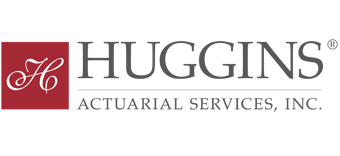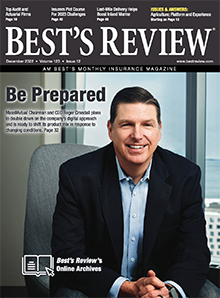What is ERM?
Business means taking risk and risk means uncertainty. Some risks are common to all companies while other risks are unique to your firm. ERM uses a broad and objective set of policies and procedures to identify, measure, monitor, and improve risk management. It can be applied to any risk source including financial, credit, and operational risks.
What is the value of ERM?
Effective ERM improves the chance of achieving your firm’s goals. Those can include maximizing profits, increasing book value, accessing excess capital, or expanding into new markets. Some firms use ERM to better balance their risk profile against their risk appetites and tolerances. Other firms want improved controls, or an uplift to their credit or quality rating. Some firms want to join competitors in realizing the full benefit of industry best practices. Effective ERM is a must-have for best-in-class companies.
How can Huggins help?
Insurance is an important tool to transfer risk. In the insurance business actuaries are expert risk professionals. We have the experience you need to design, improve, and implement ERM solutions. Our ERM analysis often includes Economic Capital Modeling, which is a special part of ERM. We customize the following services to the current state of your ERM whether mature, evolving, or not yet in place.
Build, Improve or Review an ERM Framework
An ERM Framework is a written document that describes how enterprise risk management works at your firm. It identifies the parties including their roles and responsibilities from front-line staff up to and including the Board. Huggins can build an ERM Framework from scratch that meets your needs and reflects your corporate culture. If you already have an ERM Framework then we can provide an independent review and recommend improvements.
Create or Review ERM Policies and Procedures
An ERM Framework is supported by policy documents that describe the intent of certain parts of ERM. Procedure documents describe how processes are intended to work. For example, procedure documents may describe controls, interactions between ERM parties, and oversight. Both types of documents clarify the ERM Framework.
Huggins can create a set of policies and procedures that reflect your firm’s view of ERM and how it should work. If you already have an ERM Framework then we can review your policies and procedures to issue an opinion and recommend improvements.
Identify and Measure Risk Sources
Risk is the possibility of an adverse outcome. Knowing the risks to which your firm is exposed is the first step in managing them. Huggins can evaluate your risk profile to identify the most material risks as well as their drivers. We look at both current risks and those that are emerging. We can also create a risk inventory containing key information to help manage material risks.
Set or Assess Risk Appetites, Tolerances, and Limits
How much risk can, and should, your firm bear? A risk appetite identifies the general types of risk that can, or cannot, be borne. A risk tolerance is a slightly more detailed statement of the firm’s interest in bearing risk. A risk limit is a very specific and usually numeric cap on the amount of risk allowed under normal conditions.
Huggins can determine your firm’s appetite and tolerance for bearing risk. It is important for both to agree with your business plan and corporate mission. We can also set reasonable risk limits, which usually reflect your capital position. In addition, we can make sure the appetites, tolerances, and limits align with your ERM policy and procedure documents.
Track Risk Concentrations
A concentration is an outsized accumulation of risk along a specific dimension. Concentrations can be calculated for any risk source including, for example, limits extended to policyholders, or amounts due from creditees. Dimensions for calculating concentrations include to an individual counterparty, or among all counterparties within a given industry or geography. They can also include exposure to an event (e.g., a natural catastrophe) that impacts many counterparties at the same time. For holding company clients, another dimension is the group exposure across all subsidiaries.
Huggins can create a process for calculating risk concentrations, or calculate current concentrations and compare against your risk limits. We can also create customized risk dashboards and exhibits for use in reporting concentrations in near real-time.
Financial Analysis Including Pro-Forma Financial Statements
Financial statements include an income statement, balance sheet, and statement of cash flows. These can be projected “pro forma” into the future over a horizon of your choosing, such as one to five years. The statements can be prepared as part of an economic capital analysis, a scenario analysis, or a sensitivity analysis.
A scenario analysis is used to evaluate a specific view of the future, like expanding into a new market. Sensitivity analyses are used to explore the impact of changes to various factors (e.g. inflation rates) on your future financial performance.
Develop a Management Information System (MIS) or Dashboard
Information in a clear format and as close to real-time as possible is essential in today’s uncertain and rapidly changing world. Actuarial and risk management analyses often generate large volumes of outputs. But their value to the Board or management team depends on how well the results are packaged in informative dashboards. We can work with you to determine the specific information you need and create an MIS or dashboard that presents information in the manner you find most helpful.
Evaluate Your Organization’s Current or Proposed Reinsurance Program
Reinsurance is one of the most effective tools to manage risk. However, ceded reinsurance reduces top line revenue. It can also reduce the bottom line if the value of your reinsurance spend is poor.
Huggins uses your claim history along with external data to perform a reinsurance analysis using the MetaRisk simulation model. We evaluate your reinsurance under a wide range of possible outcomes from no recovery to limit exhaustion. The value of reinsurance is determined by comparing possible recoveries to the ceded premium, while also minimizing costs. We can help optimize your reinsurance program, such as by changing limits or attachment points, by comparing the benefit of your current program against alternative programs that may provide greater value.
Create or Validate Your Organization’s ORSA Reporting
Many insurance companies are required to perform an annual ORSA (Own Risk and Solvency Assessment). The ORSA must discuss your capital adequacy and ERM Framework among other topics. A summary ORSA is provided to regulators who may use it, if deemed reliable, to determine how often or deeply your firm is examined. Every firm can realize the benefits of the ORSA process as a matter of good corporate practice even if done voluntarily.
Huggins can create an ORSA process, perform the capital adequacy and ERM review, or draft an ORSA report that you finish. We can also increase the reliability of your ORSA report by performing an independent review that you can provide to third-parties such as a regulator or rating agency.
The Huggins Advantage
Our firm’s philosophy centers on our commitment to the highest level of quality service delivered by quality people. Our long tradition of providing responsive, technical excellence to our clients’ needs through an integrated team approach requires that we focus on quality in every aspect of every engagement.



